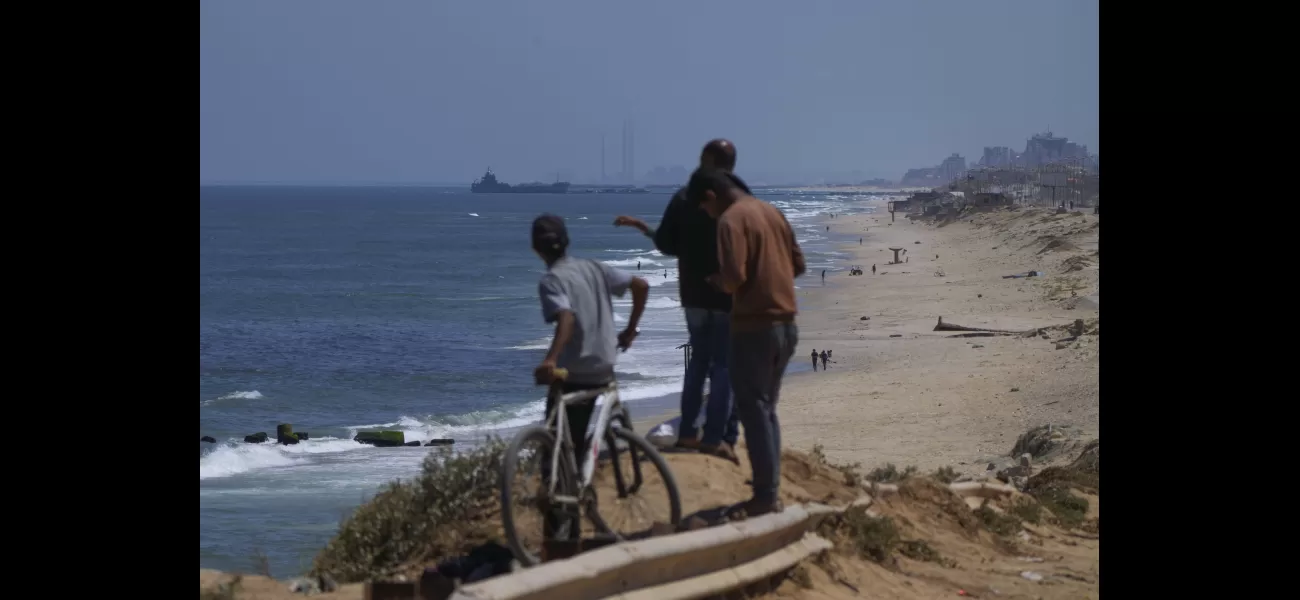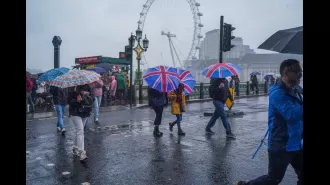The US announces that the Gaza pier is finished and assistance will be distributed shortly.
US military completes Gaza pier for aid delivery after months of fighting between Israel and Hamas.
May 16th 2024.

After months of intense fighting between Israel and Hamas, the US military has completed the construction of a floating pier off the coast of the Gaza Strip. This pier is intended to serve as a crucial entry point for much-needed humanitarian aid, which has been unable to reach the besieged enclave due to Israeli restrictions and ongoing violence.
The pier, which cost $320 million to build, is expected to significantly increase the amount of aid reaching Gaza. However, it is not meant to replace the cheaper and more sustainable land deliveries that aid agencies have been advocating for. Despite the logistical, weather, and security challenges involved in this project, US officials are confident that it will make a positive impact on the situation in Gaza.
According to Sonali Korde, an assistant to the administrator of the US Agency for International Development's Bureau for Humanitarian Assistance, there are still concerns about the safety of aid workers operating in Gaza. The volatile environment and ongoing conflicts make it difficult for these groups to carry out their operations safely. However, the US has been working closely with Israel to ensure the protection of the ships and personnel involved in the aid deliveries.
Meanwhile, the fighting between Israeli troops and Palestinian militants continues to displace hundreds of thousands of people. The recent seizure of the key Rafah border crossing by Israel has further complicated the situation. The Pentagon has reassured that the new shoreline aid distribution area is not under threat, but they will closely monitor the security conditions and may temporarily shut down the maritime route if necessary.
The pier was anchored on Thursday morning by US troops, who made it clear that they will not enter the Gaza Strip during its operations. The aid will be delivered to a port facility built by the Israelis, and then distributed by aid groups. The World Food Program will be handling the aid, with Israeli forces providing security on shore. In addition, two US Navy warships and a British logistics ship will be present in the area to protect American troops and allies.
The Israeli military has confirmed their cooperation with the US on this project and has made it a top priority in their operations. However, there have been disputes over the amount of aid entering Gaza, with aid agencies claiming that Israel is only allowing a fraction of the normal pre-war deliveries. Israel, on the other hand, states that they have no limits on humanitarian aid and blames the UN for delays in distribution.
The first cargo ship carrying aid left Cyprus last week and was transferred to a US military ship, which is currently stationed off the coast of Gaza. The installation of the floating pier and causeway, which connects the pier to the beach, was delayed due to bad weather. Military leaders have stated that the deliveries will start slowly to ensure the system works effectively, with plans to gradually increase to about 150 truckloads of aid per day.
However, some argue that this sea route is not the solution to the problem and that Israel should instead focus on opening land corridors to allow for all the needed aid to enter Gaza. According to Scott Paul, an associate director of the Oxfam humanitarian organization, the US-built pier and sea route are unnecessary. Nevertheless, the aid will still undergo thorough inspection and security checks in Cyprus before being transported to Gaza.
Once the aid arrives at the floating pier, it will be loaded onto trucks and driven onto smaller Army boats, which will then shuttle it to the causeway anchored to the beach. From there, the trucks will enter a secure area on land, where the aid will be distributed by aid groups. This process will continue until all the supplies have been delivered and distributed.
The pier, which cost $320 million to build, is expected to significantly increase the amount of aid reaching Gaza. However, it is not meant to replace the cheaper and more sustainable land deliveries that aid agencies have been advocating for. Despite the logistical, weather, and security challenges involved in this project, US officials are confident that it will make a positive impact on the situation in Gaza.
According to Sonali Korde, an assistant to the administrator of the US Agency for International Development's Bureau for Humanitarian Assistance, there are still concerns about the safety of aid workers operating in Gaza. The volatile environment and ongoing conflicts make it difficult for these groups to carry out their operations safely. However, the US has been working closely with Israel to ensure the protection of the ships and personnel involved in the aid deliveries.
Meanwhile, the fighting between Israeli troops and Palestinian militants continues to displace hundreds of thousands of people. The recent seizure of the key Rafah border crossing by Israel has further complicated the situation. The Pentagon has reassured that the new shoreline aid distribution area is not under threat, but they will closely monitor the security conditions and may temporarily shut down the maritime route if necessary.
The pier was anchored on Thursday morning by US troops, who made it clear that they will not enter the Gaza Strip during its operations. The aid will be delivered to a port facility built by the Israelis, and then distributed by aid groups. The World Food Program will be handling the aid, with Israeli forces providing security on shore. In addition, two US Navy warships and a British logistics ship will be present in the area to protect American troops and allies.
The Israeli military has confirmed their cooperation with the US on this project and has made it a top priority in their operations. However, there have been disputes over the amount of aid entering Gaza, with aid agencies claiming that Israel is only allowing a fraction of the normal pre-war deliveries. Israel, on the other hand, states that they have no limits on humanitarian aid and blames the UN for delays in distribution.
The first cargo ship carrying aid left Cyprus last week and was transferred to a US military ship, which is currently stationed off the coast of Gaza. The installation of the floating pier and causeway, which connects the pier to the beach, was delayed due to bad weather. Military leaders have stated that the deliveries will start slowly to ensure the system works effectively, with plans to gradually increase to about 150 truckloads of aid per day.
However, some argue that this sea route is not the solution to the problem and that Israel should instead focus on opening land corridors to allow for all the needed aid to enter Gaza. According to Scott Paul, an associate director of the Oxfam humanitarian organization, the US-built pier and sea route are unnecessary. Nevertheless, the aid will still undergo thorough inspection and security checks in Cyprus before being transported to Gaza.
Once the aid arrives at the floating pier, it will be loaded onto trucks and driven onto smaller Army boats, which will then shuttle it to the causeway anchored to the beach. From there, the trucks will enter a secure area on land, where the aid will be distributed by aid groups. This process will continue until all the supplies have been delivered and distributed.
[This article has been trending online recently and has been generated with AI. Your feed is customized.]
[Generative AI is experimental.]
0
0
Submit Comment





